I Also Upgraded My New Centipede. This Centipede Does Not Have A Name Yet. Originally She Was Just In
I also upgraded my new centipede. This centipede does not have a name yet. Originally she was just in one of those plastic food containers that I've kept several bugs in temporarily over the years.
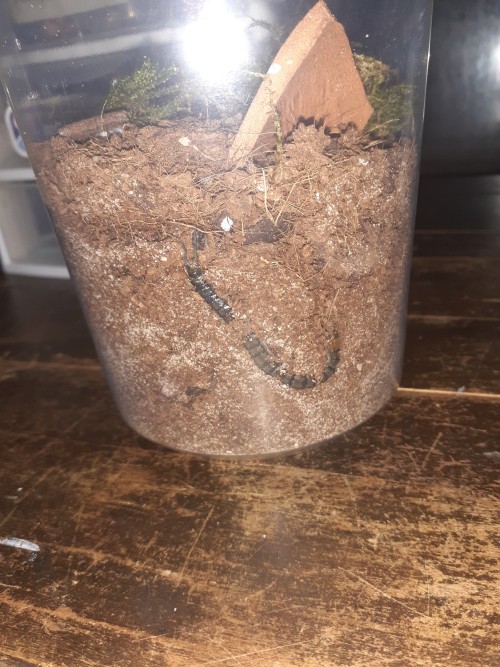
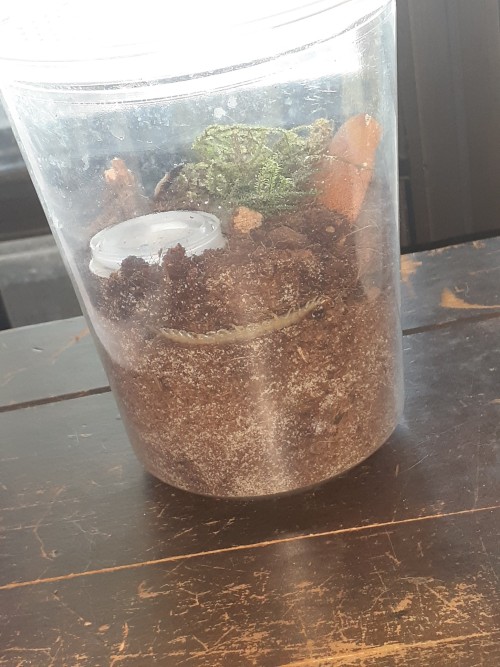
I never planned on keeping her in her in this container for long because its obviously too small and I knew I would be leaving the house to go shopping soon and that's when I got this container
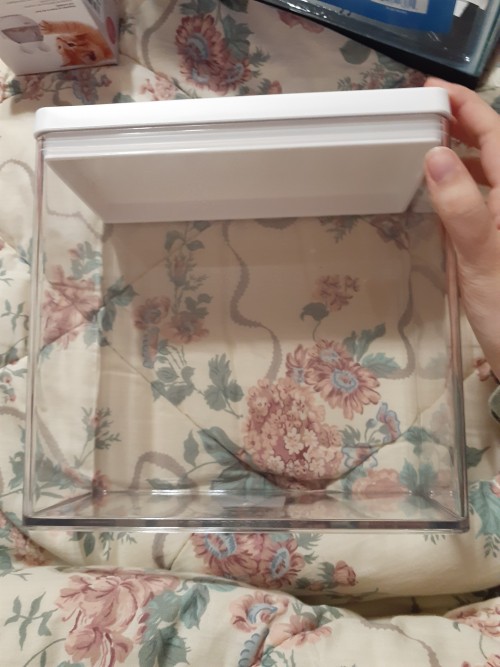
It's much wider and gives her more room to hide and burrow and explore.
This is her new enclosure

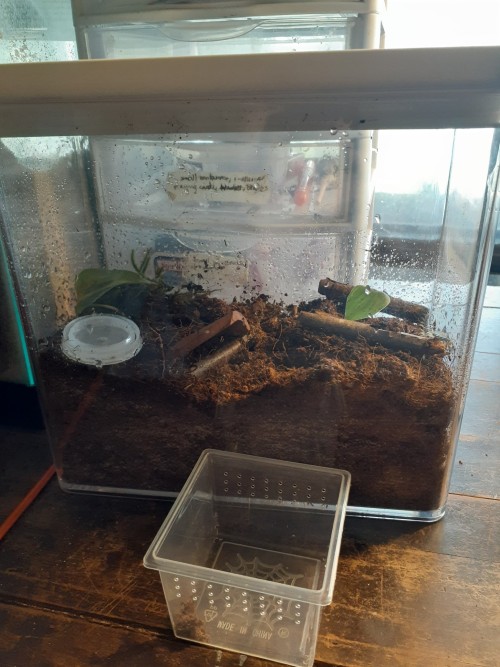
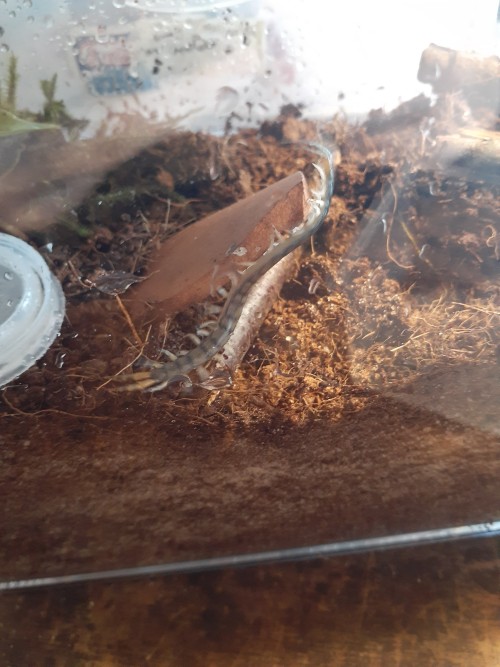
I am pretty happy with it
-
 cyanocoraxx liked this · 1 year ago
cyanocoraxx liked this · 1 year ago -
 spider-farmer liked this · 1 year ago
spider-farmer liked this · 1 year ago
More Posts from Shrivveledradish
I get to go pick up two baby asian forest scorpions on Wednesday and I am so excited
About a week ago, Fel the wolf spider died. I was not surprised because he was an old man, it did feel weird to not have a wolf spider though after his death.

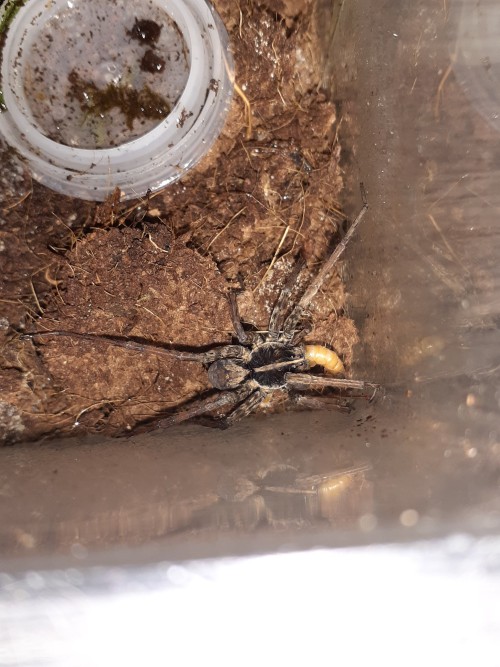
And then last night, I was in my kitchen and saw a large, female, wolf spider and I caught her, I thought I finally had another wolf spider I could take care of since I was quite sad about not having one anymore and female wolf spiders have quite long lifespans.
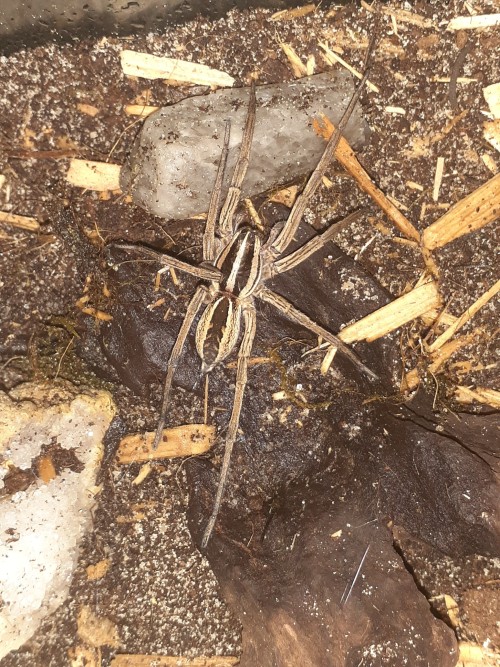



I immediately noticed that she walked kind of weird, she sort of hobbled around. However, she could still run very fast when she felt threatened, so I wasn't to worried about her.
Unfortunately though, this morning found her dead. My theory is she ate a bug that came into contact with pesticides.
Its very unfortunate that she died though.
I've seen people say fishing spiders really don't live long but ive had my fishing spider, Pebble, for nearly a year and she's still not even mature.




Here are some photos from this morning
I am almost 100% certain she is an immature dark fishing spider (dolomedes tenebrosus) which get very large so she still has a lot of growing to do.
My late dark fishing spider, River, was super large (she is actually my profile picture)


Sometime in the next few months I am going to build a large enclosure for Pebble to continue to grow in.
When I originally brought her home she was much smaller and has moved enclosures several times




(this is how I learned top opening enclosures simply do not work for me when it comes to arboreal spiders)
Originally I was going to put her into one of my spare 6.5 gallons (which are kind of ugly since they are old and scratched up) but I thought it would be good to build an enclosure that is suited more for arboreal spiders that may sit near the top of the enclosure so that is why I decided I would rather build her one over the next few months
I am excited to see Pebble continue to grow and move into her new enclosure once I build it
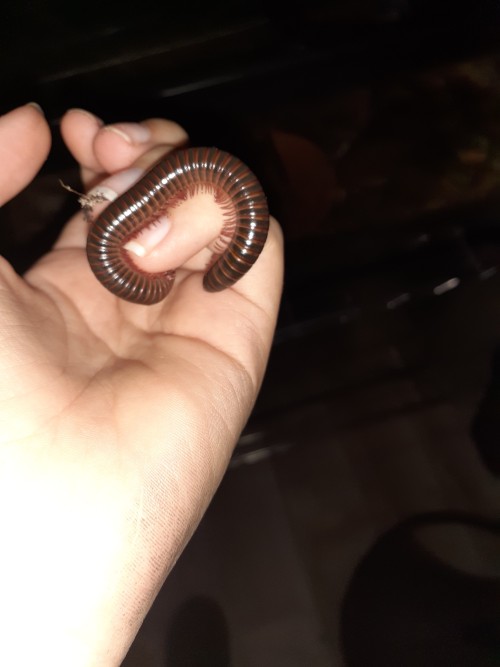
Saw my millipede sort of curled up and got worried he had died but I went to pick him up and he got mad so he's fine haha
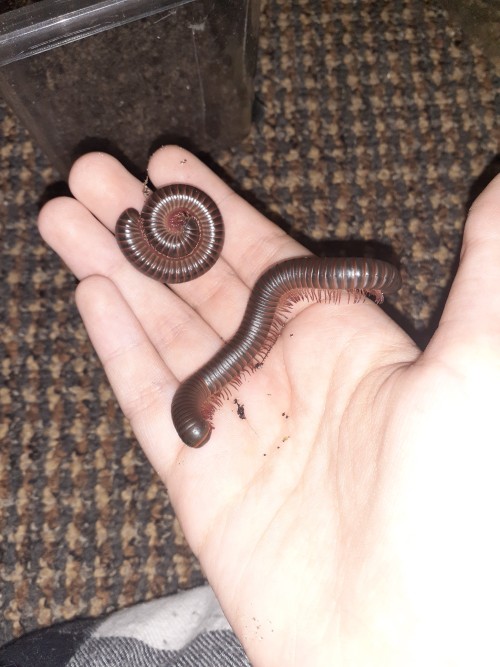

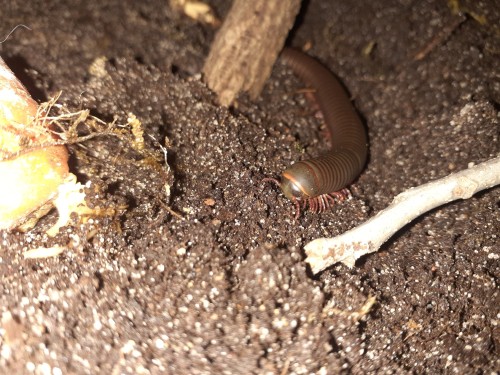
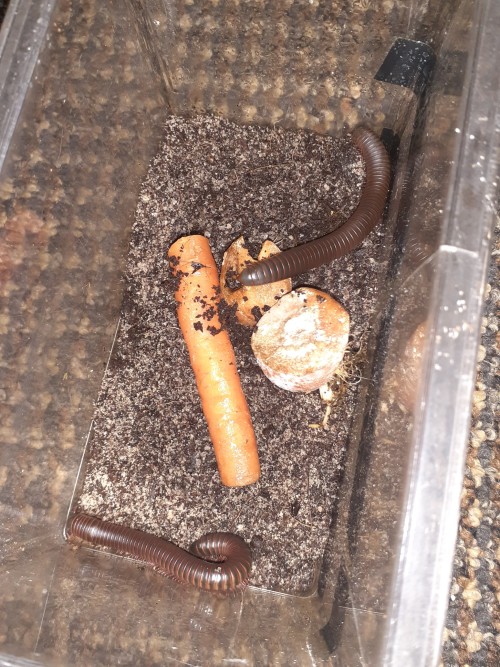
My beautiful leg worms. I had to dig them up bc I was moving them to a much larger container (I will post photos later bc I'm buying more things for it)
Thet were in a bin cage but now they are getting moved to a large (20 gallons I think) enclosure:)
There's still some babies I haven't separated out yet but now all the millipedes will have a lot more space so I won't need to worry about overcrowding once I add in the rest of the babies.
